Neuville & Mambourg
Like other major Belgian cities, Charleroi has two high-level football clubs. And like everywhere else, there is great rivalry
between these two circles, the Sporting and the Olympic.
This rivalry is found in their respective stadiums : the Mambourg and the Neuville.

The beginnings of football in the Black Country
As is often the case, before the appearance of the clubs we still know today, there were probably older football clubs than the
Sporting and the Olympic. Few of them managed to survive and for those who only lasted a few years, it is very difficult today
to establish a history.
It is therefore more than likely that clubs were founded in Charleroi in the 19th century, but the written traces have
disappeared. The same obviously goes for the old grounds or stadiums that may have existed in the capital of the Black Country.
The precursor : the Sporting
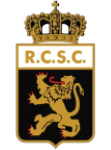 The oldest club that has come down to us is the Royal Charleroi Sporting Club. Worn on the baptismal font by Bridou, Bermus and
Deguelde on January 1, 1904, he wasn’t admitted to the Belgian federation until 1907.
The oldest club that has come down to us is the Royal Charleroi Sporting Club. Worn on the baptismal font by Bridou, Bermus and
Deguelde on January 1, 1904, he wasn’t admitted to the Belgian federation until 1907.
During its first years, the club will grow in the regional series and will even go to sleep in 1913 for lack of financial means.
After the war, Sporting resumed its activities and became a cooperative. The club will still have to wait until 1926 before finally
reaching the national series but moved to Rue Spinois in a new 10,000-places stadium. The new stadium was inaugurated on
Christmas Day 1923. In 1926, the Sporting received the number 22.
The club stayed there until 1939 when it moved a few hundred meters to the new municipal stadium, the Mambourg. Although the site
has been dedicated to football since 1923, the stands will not be built until 1939. This new stadium, larger and more modern, should
allow the Sporting to continue its progress. With approximately 22,000 places, it has a large seated stand (with a pillarless
roof in the middle of the stands, which was revolutionary at the time), a large standing covered stand on the other side of the field
and terraces behind each goal. This new stadium takes its name from the coal mining that took place there a few years ago, the
Charbonnage du Mambourg.
The Sporting will still have to wait until 1947 to finally reach Division 1 but the club will fall back into Division 2 at the end
of the 1956-1957 season. Thereafter, the club will alternate between D1 and D2 and will have to wait until 1985 to stay in the highest
division, except in 2011-2012. Its only feats of arms are a vice-champion place in 1969 and two lost Belgian Cup finals in 1978 and
1993. The Zebras have sometimes participate in the European Cup (Fair Cities, UEFA and Intertoto) but with disappointing results :
9 wins, 3 draws and 8 losses.
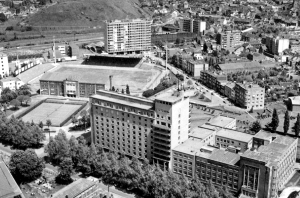
The first successes for the Olympic
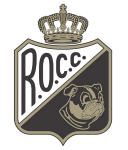 If the Sporting can take pride in being the dean of the Carolo clubs, the Olympic can claim to be the first club to really
see success in Charleroi. The club is created on September 20, 1911 under the name of Olympic Club Caroloregian Lodelinsart
and during 11 years, the club will have to wait before settling down definitively in its new stadium of the Neuville in 1922.
In 1926, the club receives the number 246.
If the Sporting can take pride in being the dean of the Carolo clubs, the Olympic can claim to be the first club to really
see success in Charleroi. The club is created on September 20, 1911 under the name of Olympic Club Caroloregian Lodelinsart
and during 11 years, the club will have to wait before settling down definitively in its new stadium of the Neuville in 1922.
In 1926, the club receives the number 246.
Very quickly climbing the levels of Belgian football, the club arrived in Division 1 in 1937 and didn't experience its first
relegation until 1955. Also in 1937, the Neuville expanded and became a modern stadium with 30,000 places. As is often the case,
the stadium consists of a large seated stand, a standing covered stand on the other side of the field and uncovered
terraces surrounding the lawn behind the goals. Finally, and again in 1937, the club changed its name when it was awarded its
title of "Royal Society" to Royal Olympic Club Charleroi.
The Olympic hit the headlines by capturing the highest steps of the D1 from its earliest years, finishing regularly between third
and sixth place. The title of vice-champion of Belgium was even awarded to the club in 1947. Alas, the Olympic will never take
first place and will gradually fall into anonymity and instability. Only two seasons will still be played in Division 1 : 1967-1968
and 1974-1975. Since then, the club has vegetated most often between the third and fourth divisions.
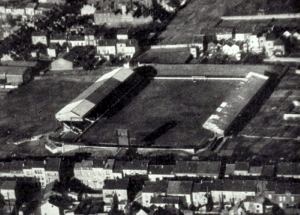
One modernized stadium, the other neglected
Between the end of the Second World War and the 1970's, the Mambourg and the Neuville stadiums didn't change. Barely, these grounds will benefit from artificial lighting but that's it. This is easily explained : the Sporting stadium is relatively new and is still perfectly suitable while the re-entry into the rank of the number 246 prevents any renovation and even all maintenance of the old Neuville.
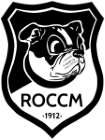 It wasn't until the mid-1970's that the main the Neuville stand was renovated, and even 1992 when the business-seats were
installed in the same stand. If this new arrangement is beneficial for the finances of the club, the stand loses the
vast majority of its seats and is somewhat disfigured.
It wasn't until the mid-1970's that the main the Neuville stand was renovated, and even 1992 when the business-seats were
installed in the same stand. If this new arrangement is beneficial for the finances of the club, the stand loses the
vast majority of its seats and is somewhat disfigured.
The other stands have remained unchanged since 1937. Gradually, and for security reasons, the capacity decreases from 30,000 to 18,000 places.
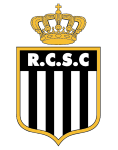 The Sporting has a well-kept stadium. The club yields to the fashion of business-seats around 1985 and profoundly transforms
its seating stand : the building is extended over the entire length of the field, two tiers are added (one with business-seats
and the other with outside seats) and a new roof covers everything. The original stand is still present in the center of the new building.
The Sporting has a well-kept stadium. The club yields to the fashion of business-seats around 1985 and profoundly transforms
its seating stand : the building is extended over the entire length of the field, two tiers are added (one with business-seats
and the other with outside seats) and a new roof covers everything. The original stand is still present in the center of the new building.
The qualification of the Sporting for the UEFA Cup in 1994 forced the municipal authorities to quickly develop the Mambourg. Indeed, if
the Sporting wants to play its European matches in its stadium, the number of seats must be increased and the number of standing
places reduced. Thus, the stands behind each goal are transformed into seated and covered stands. The capacity is 18,000 places.
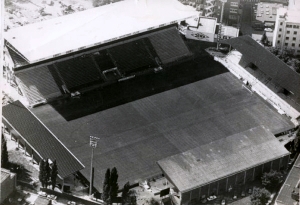
Euro 2000 and the scandals
 In the mid-1990's, Euro 2000 was jointly awarded to the Netherlands and Belgium. The biggest cities of the two countries
are applying to host some matches of this major competition. Charleroi doesn't want to miss the boat and logically puts
everything on an in-depth renovation of the Mambourg.
In the mid-1990's, Euro 2000 was jointly awarded to the Netherlands and Belgium. The biggest cities of the two countries
are applying to host some matches of this major competition. Charleroi doesn't want to miss the boat and logically puts
everything on an in-depth renovation of the Mambourg.
The project is simple : the main stand remains unchanged while on the other three sides will be erected new seated
stands with a rather special roof. The stadium being wedged in a very dense urbanization, the possibilities of extensions
are limited. To reach a minimum capacity of 30,000, the architect Paul Petit designed high stands with a roof supported by
huge steel beams placed on pylons at the four corners of the field. Thus, the ex-standing stand will have three tiers
and will have a really impressive height. In order not to give too much shade to neighboring buildings, the third tier will
be dismantled after the tournament and will be installed at the new Gilly velodrome, in the suburbs. The stadium will then have
24,891 seating and covered places. Finally, the Olympic will have to move there, forced.
The stadium then changed its name and became the Stade du Pays de Charleroi.
After the tournament, in 2003, the Mambourg welcomed the La Louvière club so that it could play its European Cup match against
Benfica (Portugal) following its victory in the Belgian Cup, the Stade du Tivoli in La Louvière not being able to host a European match.
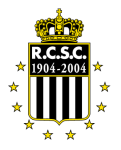 Unfortunately, we are in Charleroi and things never happen legally.
Unfortunately, we are in Charleroi and things never happen legally.
The building permit for the renovation will be suspended and then canceled by the Council of State. Numerous irregularities
will be discovered there and the fraudulent management of the city’s sporting heritage will be included in what is known as
the “Charleroi affairsNote”.
The Socialist politicians implicated in this scandal, three will have a major part in the renovation of the stadium for Euro 2000 :
the mayors Jean-Claude Van Cauwenberghe and Jacques Van Gompel, as well as the sports alderman Claude Despiegeleer. All will be
condemned by justice. This same justice summons the city of Charleroi to raze the disputed stands (therefore the most recent) under
penalty of heavy penalties.
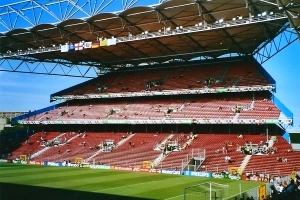
One ridiculous stadium, the other condemned
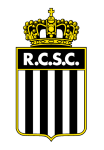 Thus, the city of Charleroi must imperatively reduce the size of the Mambourg to avoid total and immediate demolition.
Thus, the city of Charleroi must imperatively reduce the size of the Mambourg to avoid total and immediate demolition.
The second tiers of the new stands are therefore demolished, as is the very special roof. The stands are without coverage but the
work completed in time allows the Sporting to start the 2012-2013 season in an amputated but "legal" stadium. The number of places
drops to 14,891.
Very quickly, the need to rebuild a roof on all of the stands appeared to everyone. But tight deadlines and budgets will prevent
us from designing a coherent and beautiful whole.
Rather than using the same system as during the renovation for Euro 2000 (a roof suspended from the four pylons), it is a technique
dating from the beginning of the 20th century that is chosen. Many poles will be planted in front of the stands to support the roof.
The Mambourg then acquired the appearance of a pre-war stadium.
Sporting, having regained European ambitions, asked the city at the same time to bring the stadium into line with UEFA requirements.
Gradually, all the red (or blue) seats are replaced by black and white seats. This failed renovation will at least have the merit of
giving the Sporting grounds a face more in line with its identity.
Meanwhile, on the Neuville side, business is getting worse for the Olympic.
However, the club had managed to climb back into the second division but the catastrophic management of the club's finances led it
to the brink of bankruptcy several times. The situation is so critical in 2012 that it is believed that the 2011-2012 season will be
the very last in number 246. However, radiation is narrowly avoided thanks to the will of the Dogues' supporters.
A merger between the ROCC and the Royale Association Marchiennoise des Sports (registration number 278) should have offered the
Olympics new ambitions but the transplant didn't take.
 In 2019, a new unnecessary fusion is made this time with the Royal Châtelet-Farciennes Sporting Club (registration number 725).
During this merger, the transfer of heritage is deemed non-compliant by the federation and sends the Olympic Charleroi Châtelet
Farciennes (the new name of the club) in the provincial series. A new catastrophe for the old centenary club...
In 2019, a new unnecessary fusion is made this time with the Royal Châtelet-Farciennes Sporting Club (registration number 725).
During this merger, the transfer of heritage is deemed non-compliant by the federation and sends the Olympic Charleroi Châtelet
Farciennes (the new name of the club) in the provincial series. A new catastrophe for the old centenary club...
The club still manages to extricate itself from the provincial but the future does not look bright, however.
As for the stadium, the first closure occurred in 2008 when the dangerous state of a terrace was discovered. It is quickly demolished
and is replaced by a simple grassed embankment.
The following year, the obsolete lighting is completely renovated. But this new installation is mounted on the original pylons, which
are very old. In 2010, a new closure was ordered following the threat of collapse of these pylons. The old high-masts are dismantled
and replaced with new ones.
Shortly after, the roof of the business-seats collapsed. New closure and new emergency work.
The Olympic has always refused to move to its rival’s lair after Euro 2000. Not being the owner of its facilities, the Olympic can only
note the lack of maintenance of its stadium. Since then, the stadium has been opened again, but its future is more than uncertain.
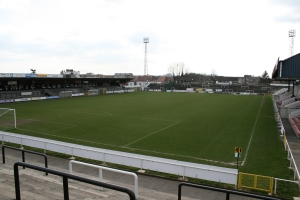
Two projects but...
A new stadium should have been created in Marchienne if Belgium (as well as the Netherlands) had obtained the organization of
the 2018 World Cup. This new installation would have included 44,000 seats (reduced to 25,000 after the tournament) and would
have been at the heart of a site dedicated to sport. Its name would have been "La Porte des Sports". The Sporting and the Olympic
would have been invited to move there.
But from the start, the Sporting management displayed a categorical refusal. In addition, the organization of the 2018 World Cup
was "offered" to Russia. The project is therefore stillborn.
More recently, a new stadium project for the Sporting has been launched. Erected on the site of the previous project, the new lair
of the RCSC would this time include 22,000 places and would be inaugurated in 2024.
If this business comes to an end, the fate of Mambourg will be sealed and the old stadium will have hosted the Sporting for 85 years.
As for the Olympic, it does not seem that this club is associated with the project.
If the future looks bright for the Sporting, the Olympic has reason to worry about its future...
Pictures
Neuville Stadium
The Neuville stadium, in its infancy. 30,000 places for a very popular club from the start.
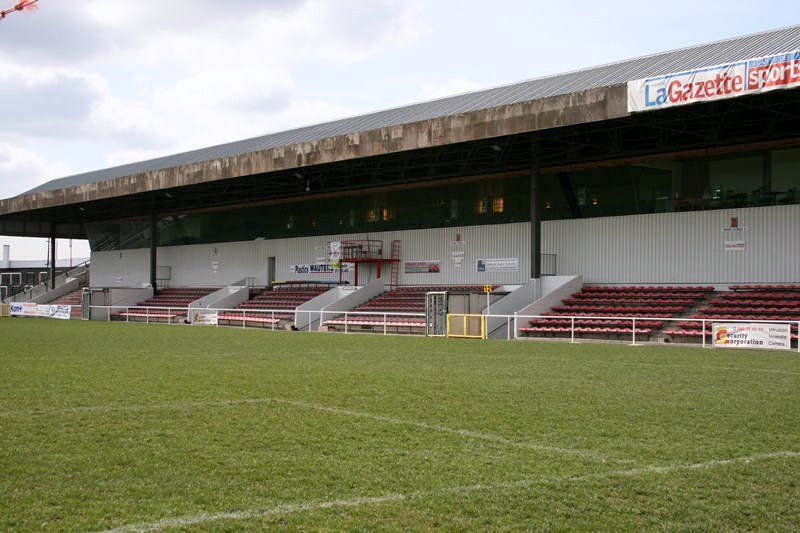
Neuville Stadium
The seated stand, invaded by business-seats.
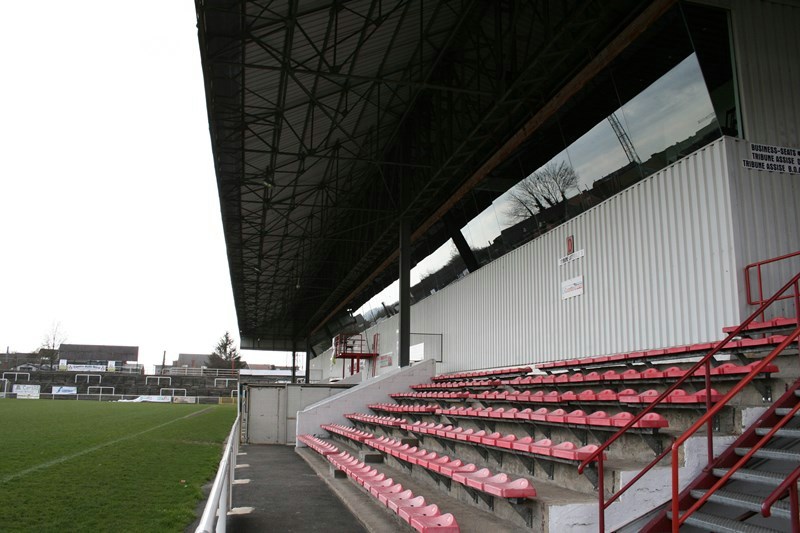
Neuville Stadium
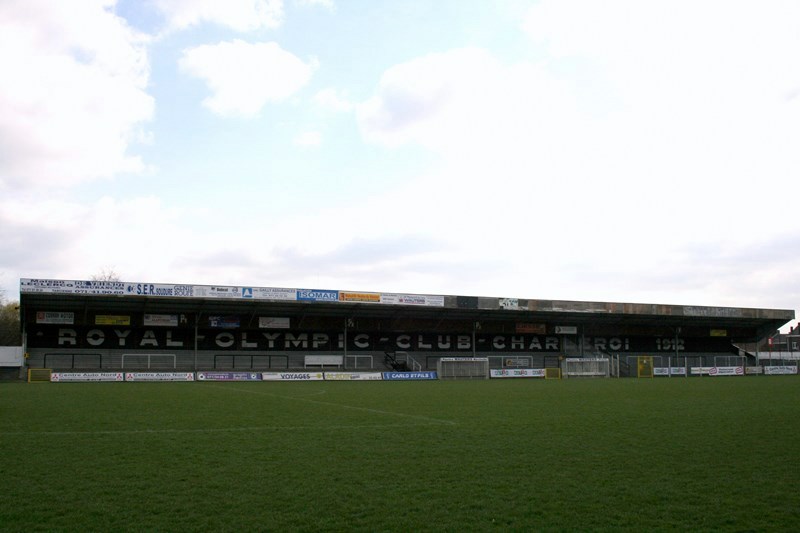
Neuville Stadium
The side stand, stronghold of the carolo kop.
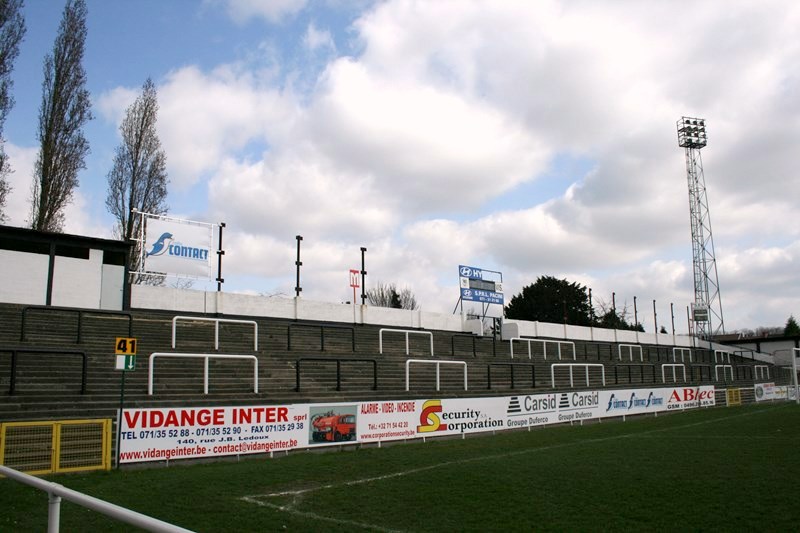
Neuville Stadium
The surviving end stand. The other has since been demolished.
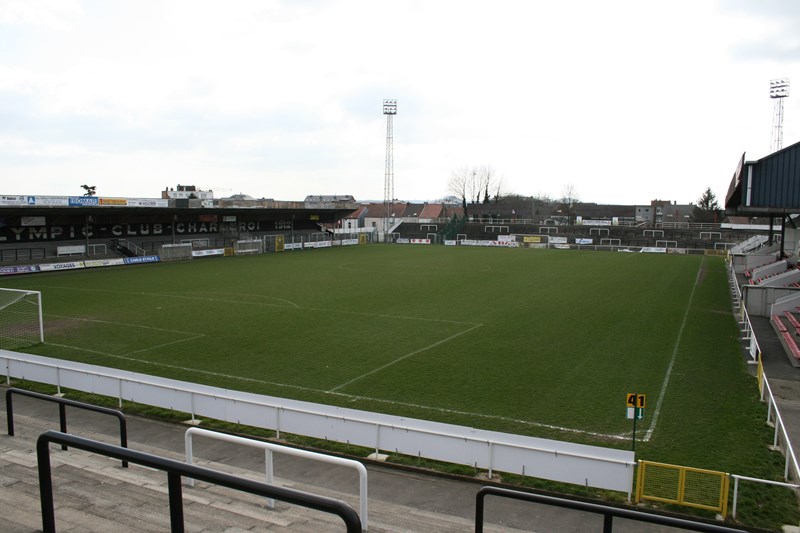
Neuville Stadium
In the background, the destroyed terrace.
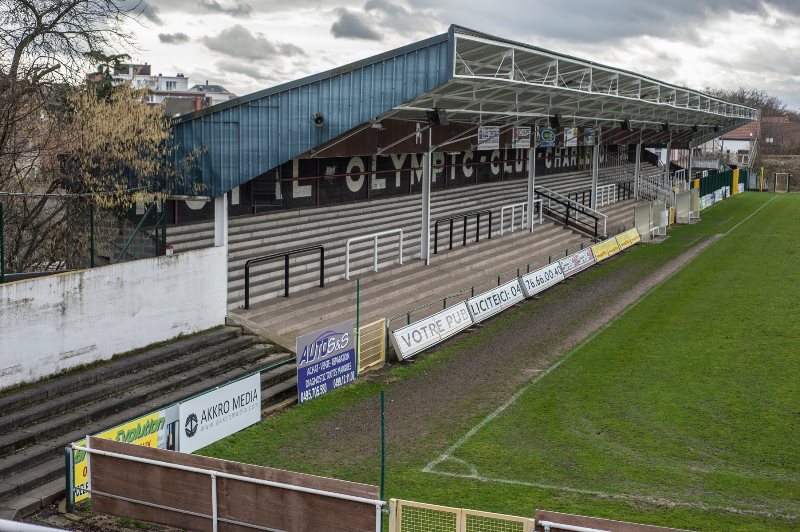
Neuville Stadium
Certainly dated facilities but which have a certain charm.
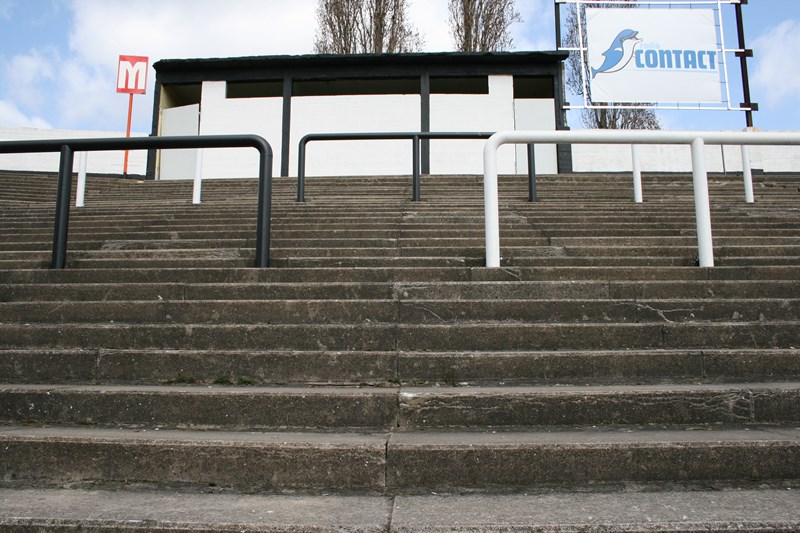
Neuville Stadium
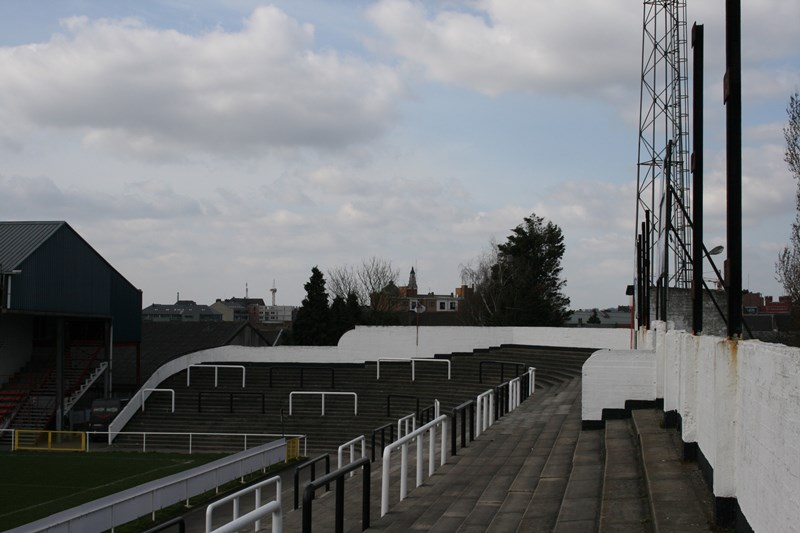
Neuville Stadium
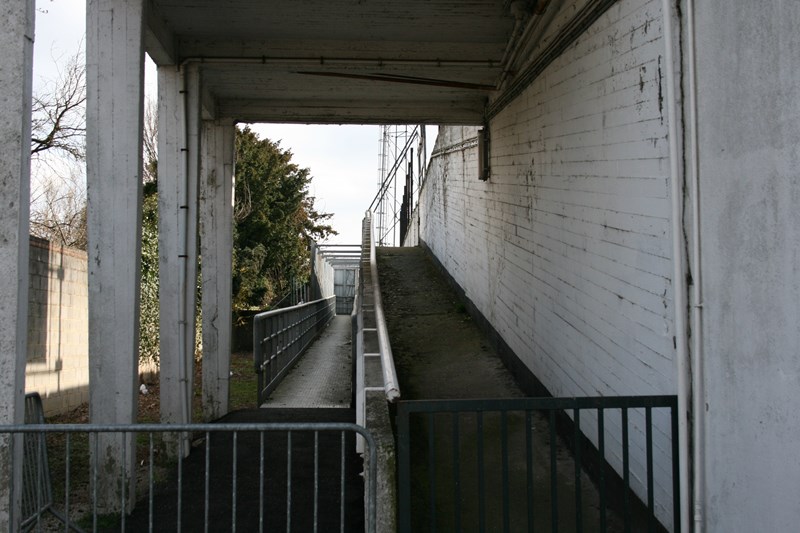
Neuville Stadium
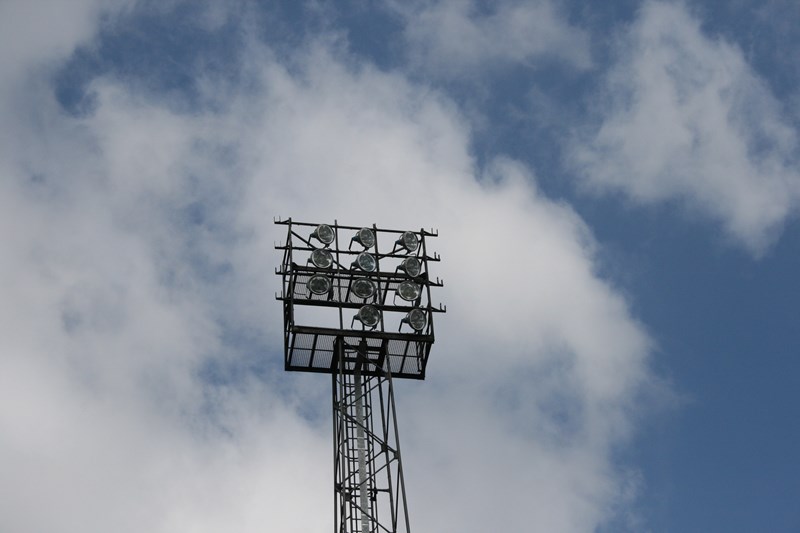
Neuville Stadium
A pylon just equipped with its new floodlights. A year later, these pylons had to be dismantled urgently.
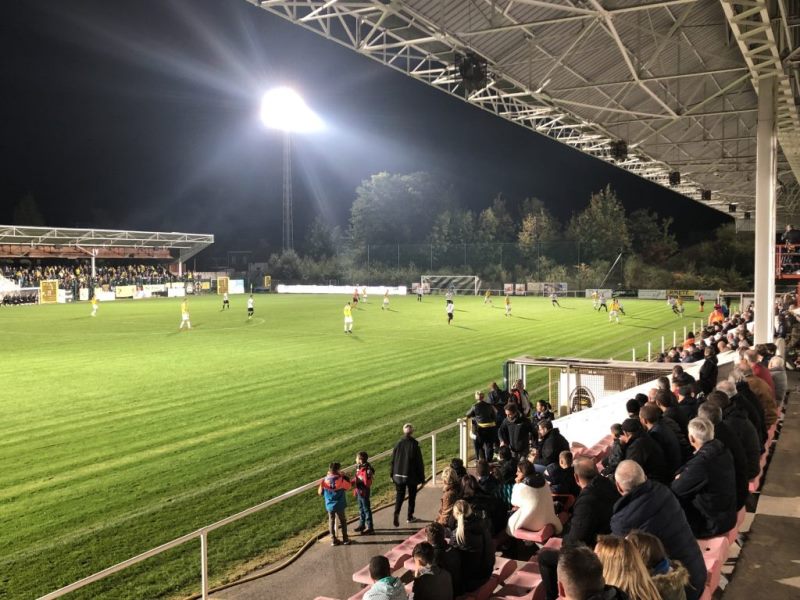
Neuville Stadium
The old stadium has a more than uncertain future.
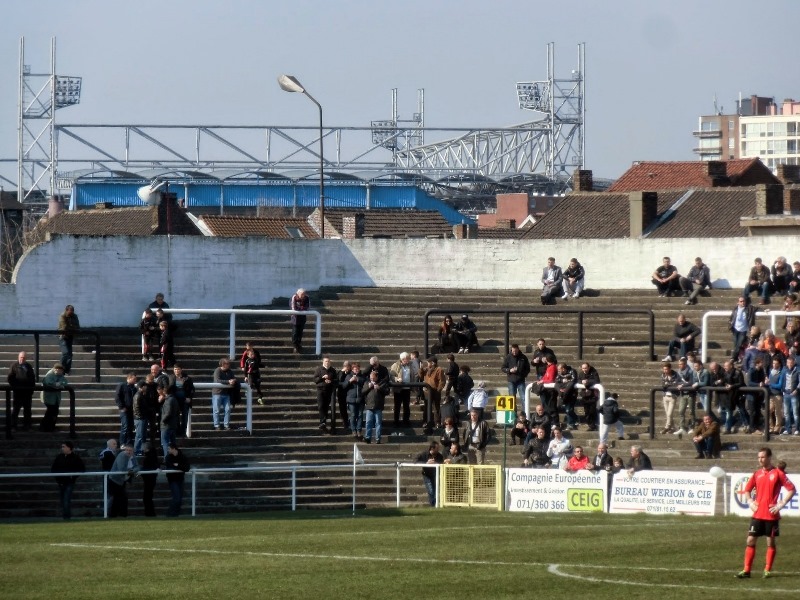
Neuville Stadium
A few hundred yards away, the enemy’s stadium.
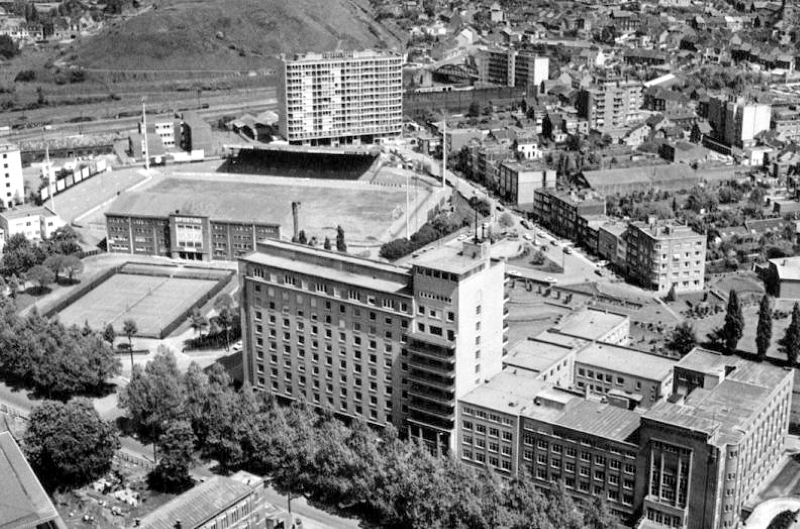
Mambourg Stadium
The Mambourg stadium, in a district not yet saturated with buildings.
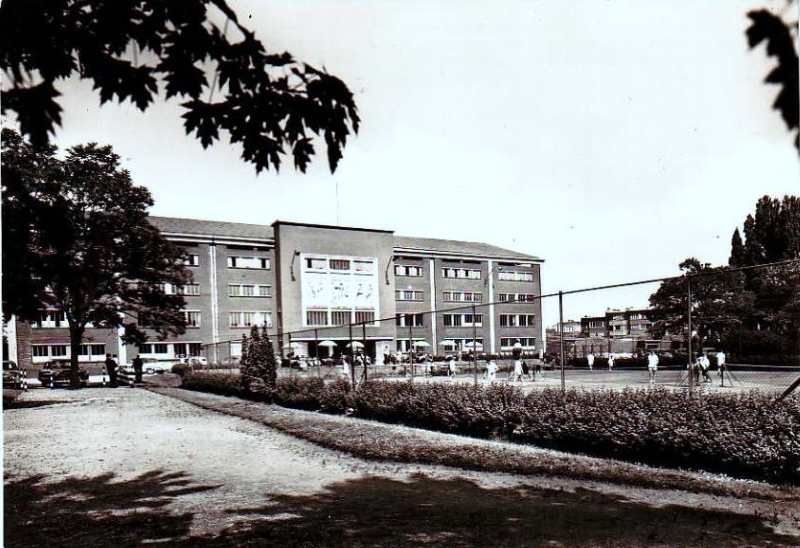
Mambourg Stadium
The beautiful Art Deco facade, lost during the modernization of the stand in the 80's.
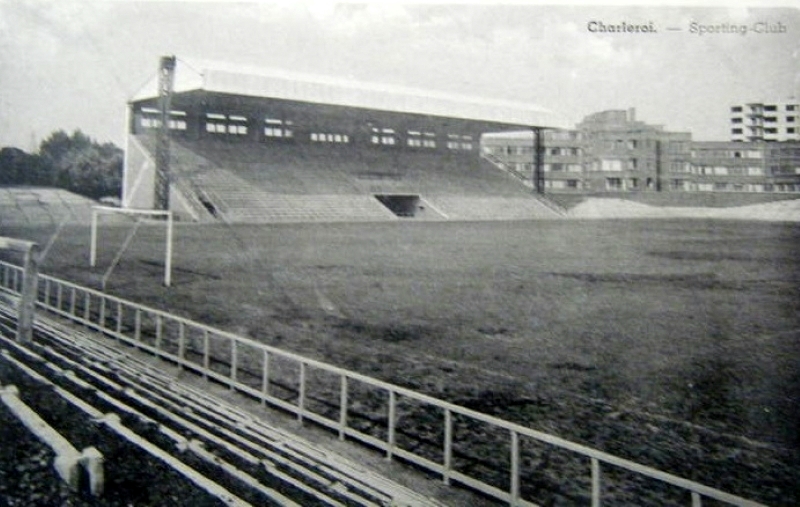
Mambourg Stadium
The original roof, the principle of which will be taken up for reconstruction in 1999.
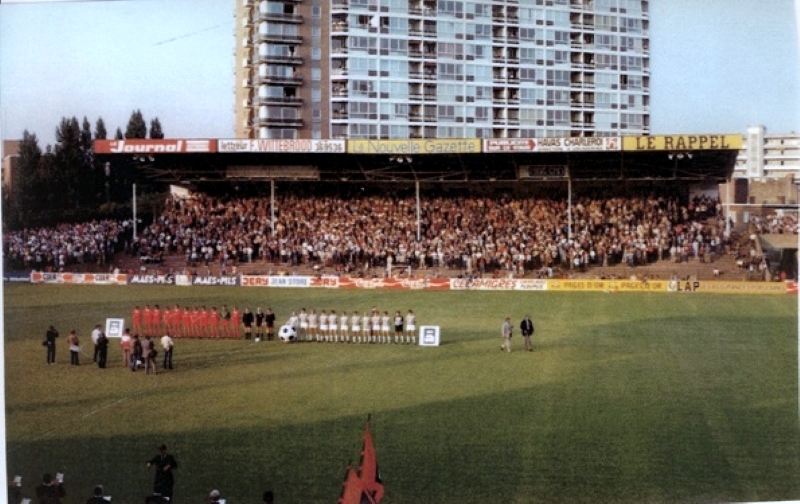
Mambourg Stadium
The side stand, where the hottest supporters of Sporting were.
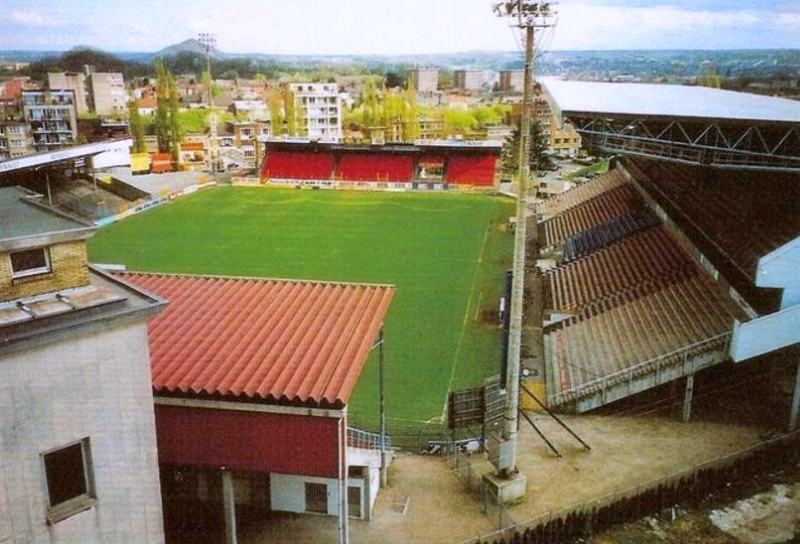
Mambourg Stadium
The two end stands, rebuilt for the European Cup in 1994.
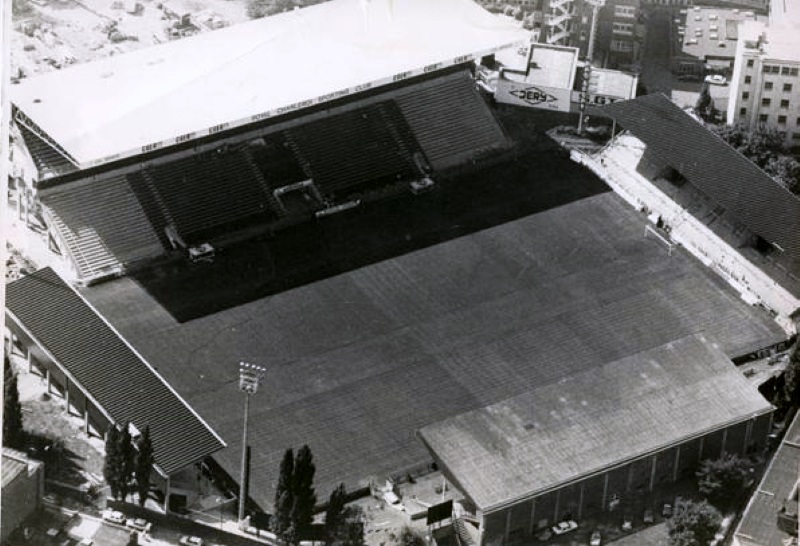
Mambourg Stadium
The Mambourg, on the eve of major works. Capacity : 18,000 places.
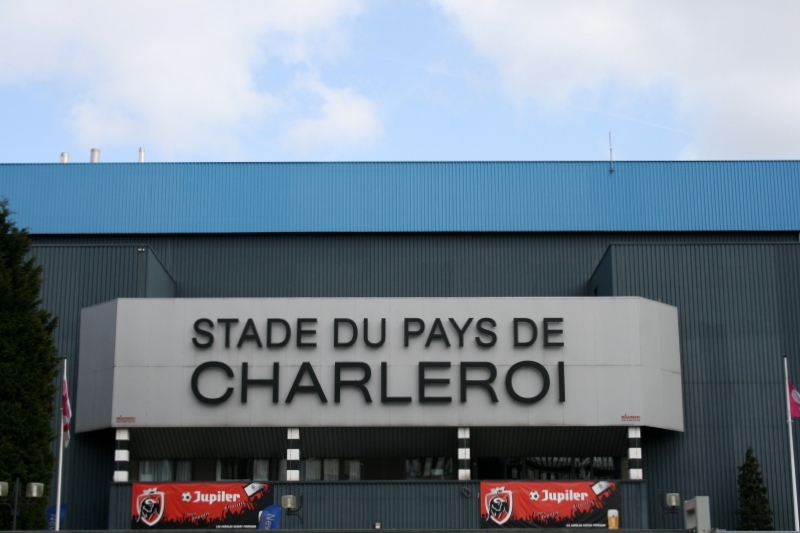
Mambourg Stadium
The new facade of the stadium. Goodbye to aesthetics...
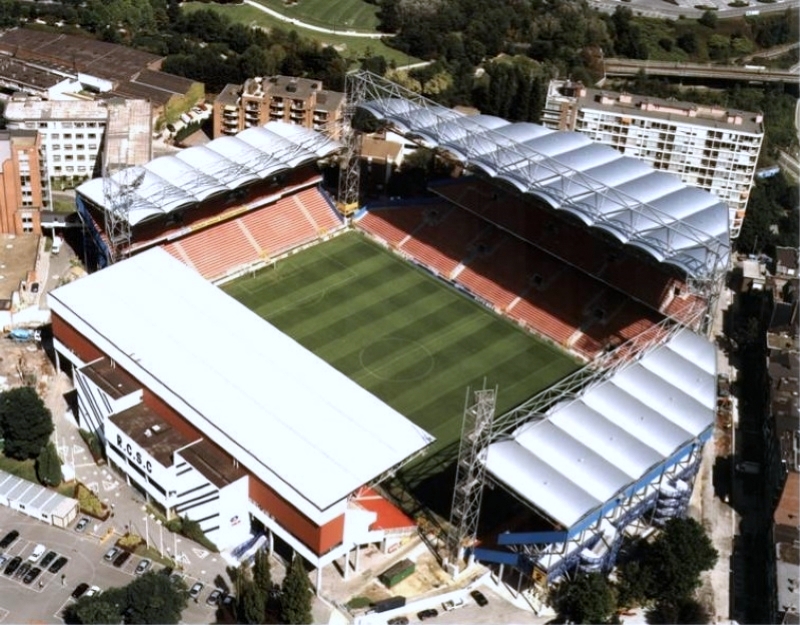
Mambourg Stadium
The Mambourg, ready for Euro 2020.
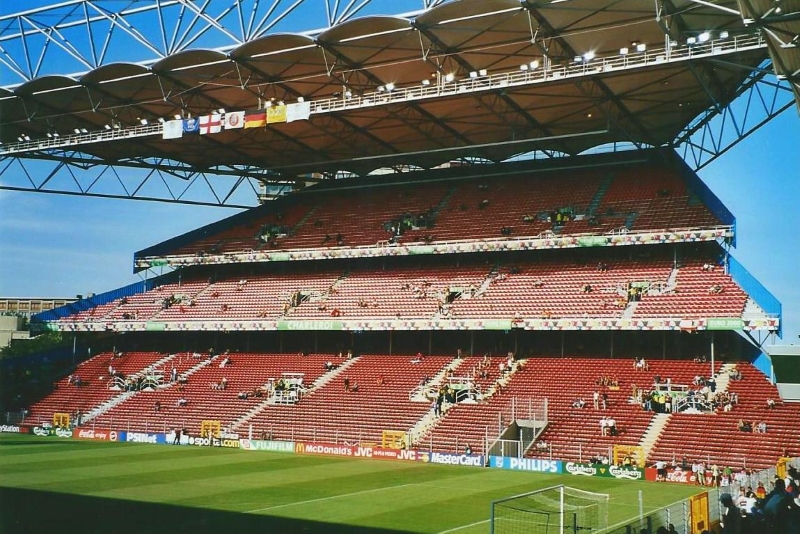
Mambourg Stadium
The huge stand 3. The third tier will be dismantled after the tournament and reassembled at the Gilly velodrome.
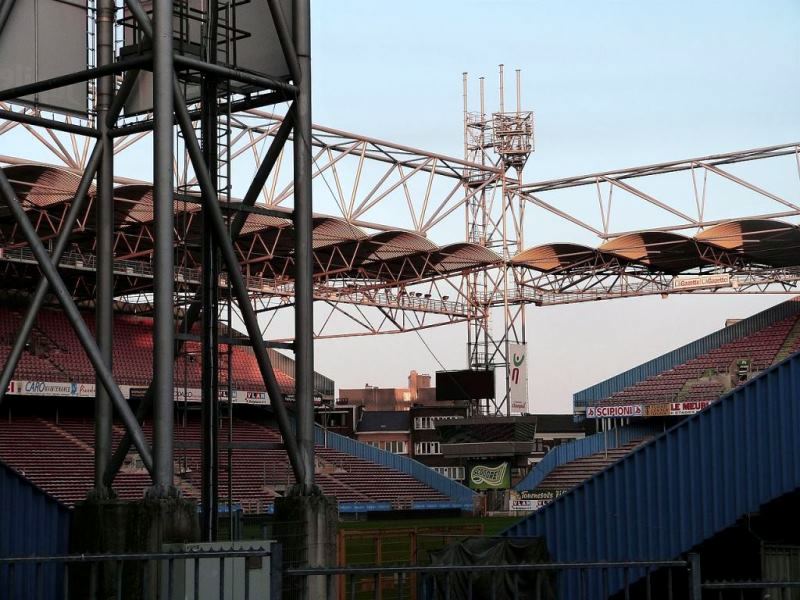
Mambourg Stadium
The stadium after the tournament. Capacity : 24,891 seats.
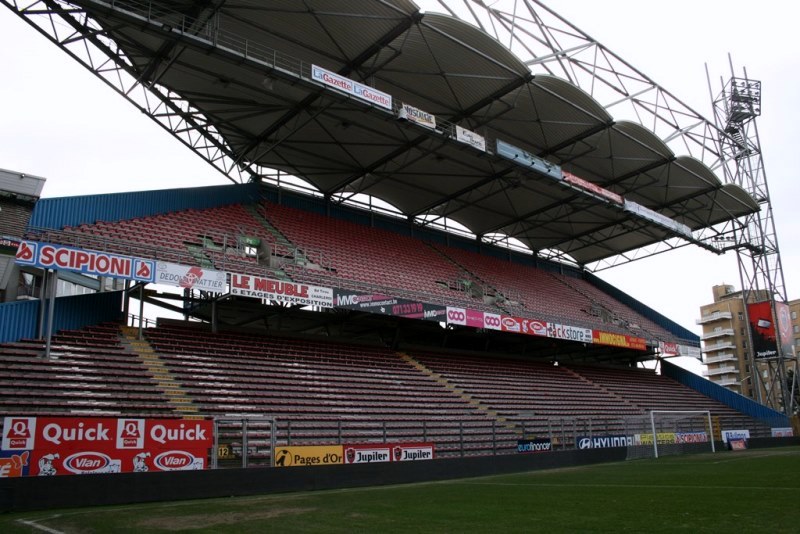
Mambourg Stadium
Why red seats ? To recall the stranglehold of the Socialist Party on Charleroi for ages ?
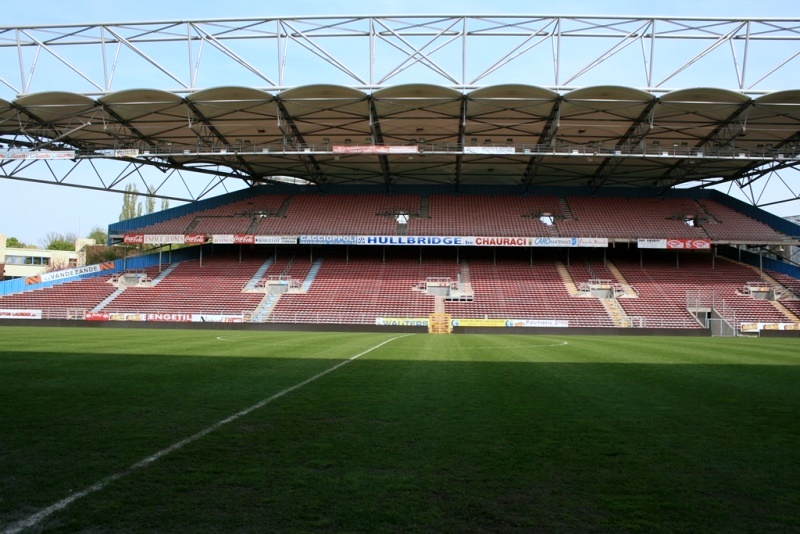
Mambourg Stadium
Stand 3. Even without its third tier, it remains a unique construction.
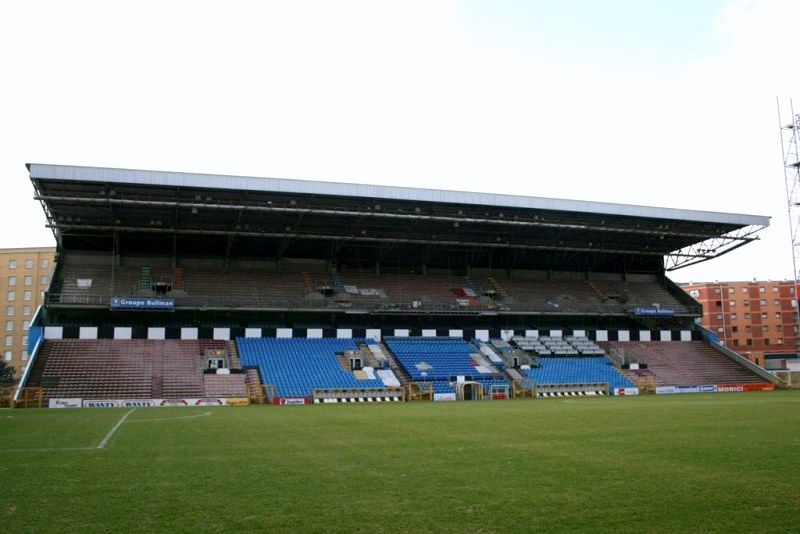
Mambourg Stadium
The main stand. The original building is still there, under the blue seats.
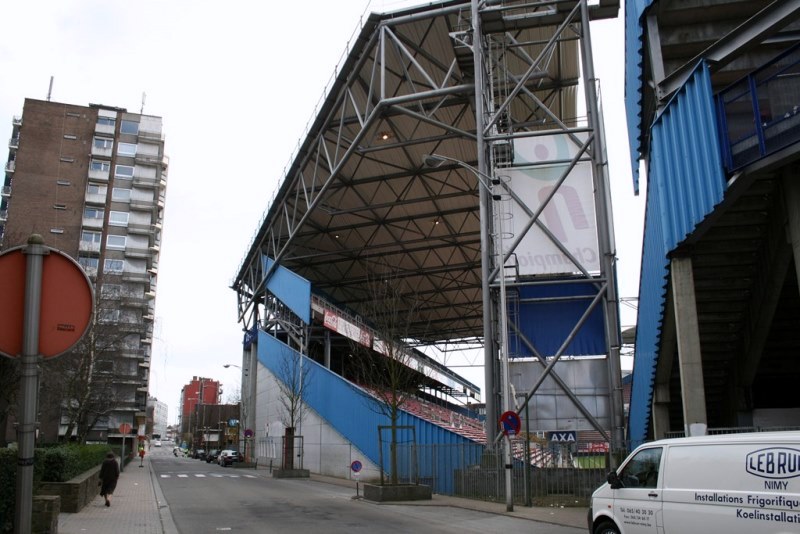
Mambourg Stadium
Astuteness for building the stadium.
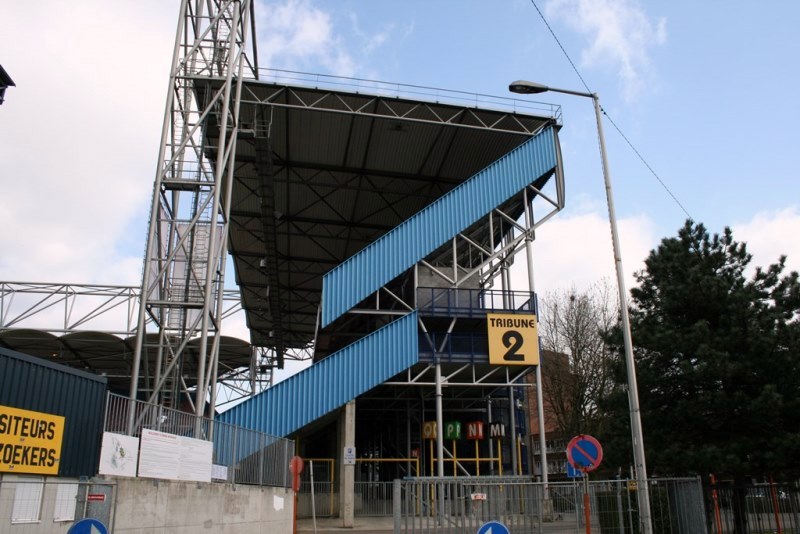
Mambourg Stadium
End stand 2, reserved for visitors.
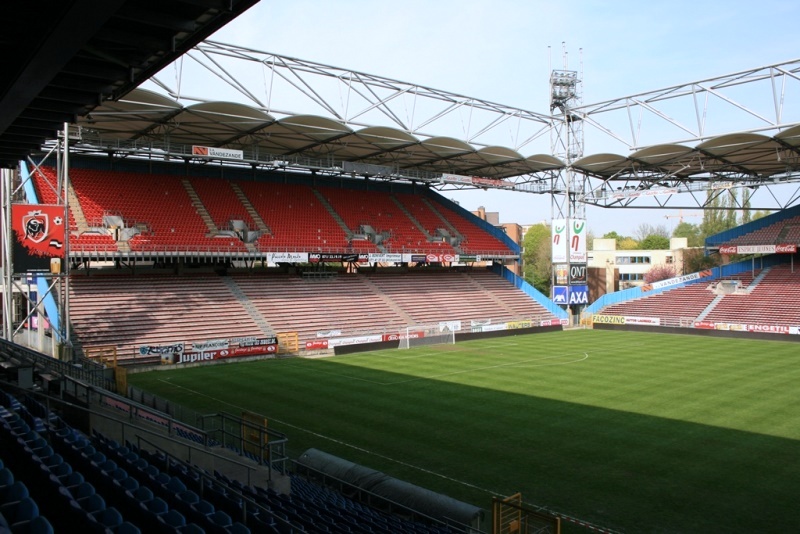
Mambourg Stadium
The post-Euro 2000 Mambourg was a modern and pleasant stadium. Too bad it was built without respecting the law.
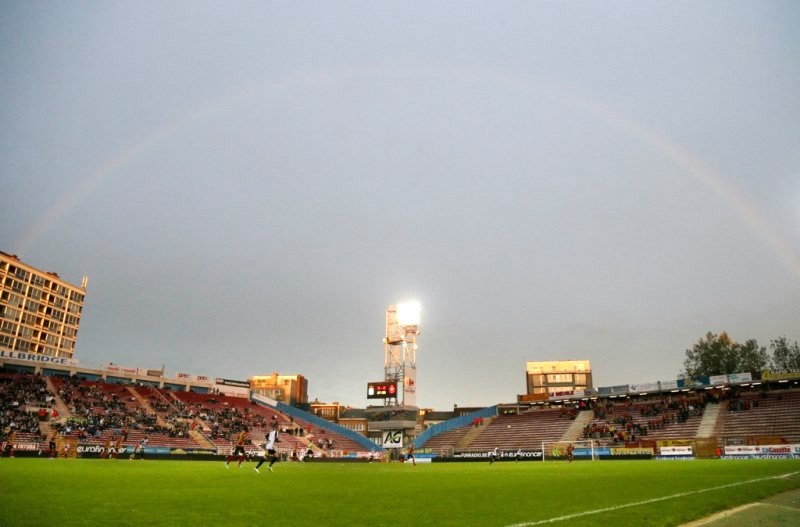
Mambourg Stadium
The amputated stadium of its roofs and second tiers.
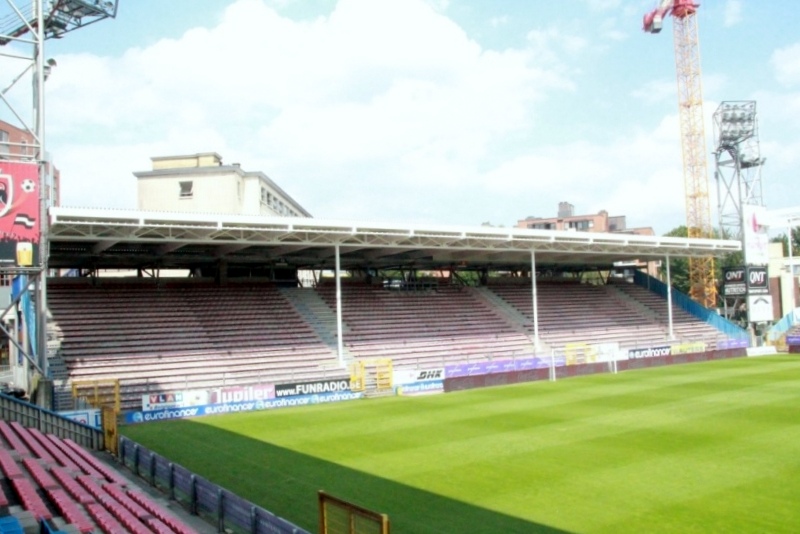
Mambourg Stadium
The new ridiculous roofs.
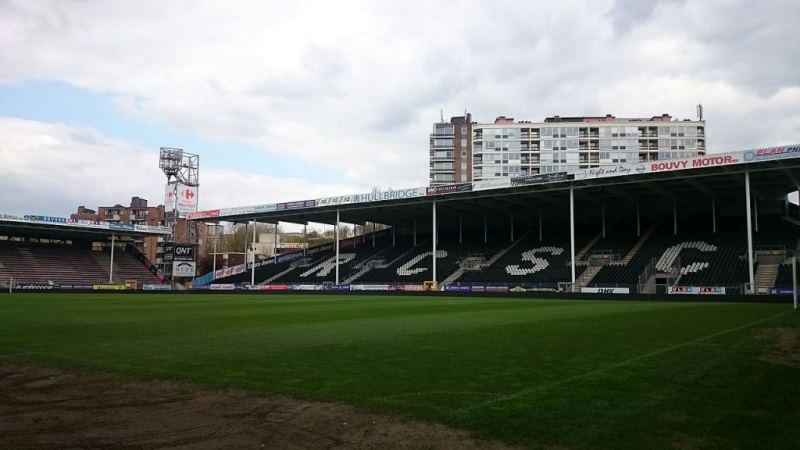
Mambourg Stadium
At least the seats are black and white now.
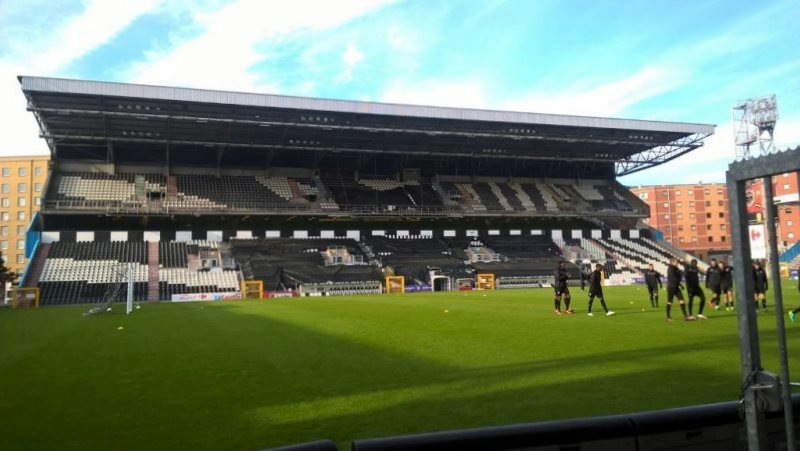
Mambourg Stadium
The main stand was also given new seats reminiscent of the club's symbol, the zebra.
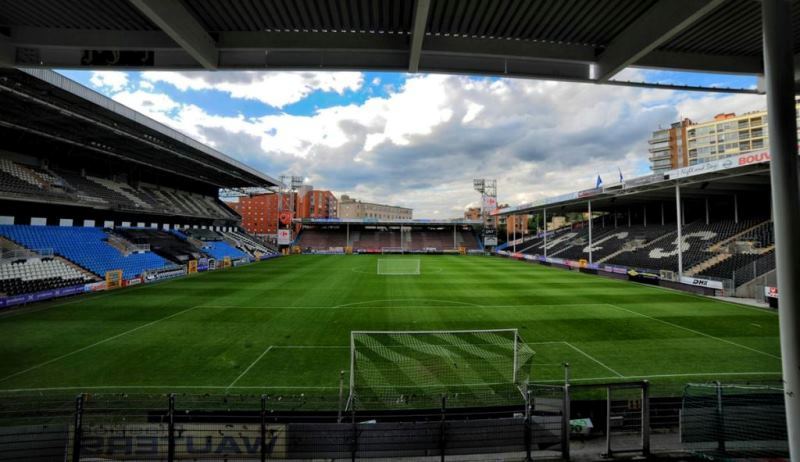
Mambourg Stadium
A tinkered stadium for a team in need of trophies...
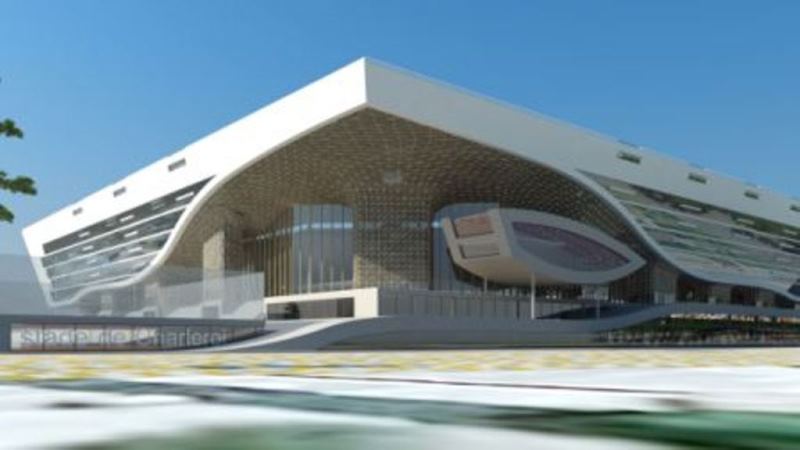
World Cup 2018 project
The project for the World Cup. It is said that it is beautiful...
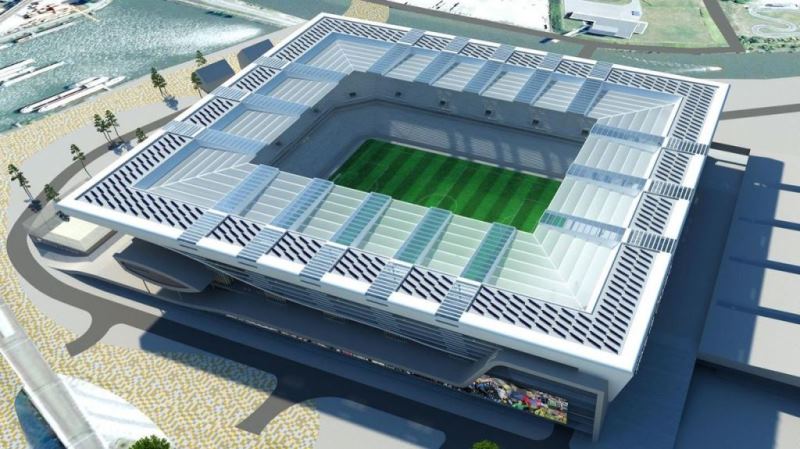
World Cup 2018 project
44,000 places, then 25,000. The same scenario as for the Mambourg and Euro 2000. Project canceled.
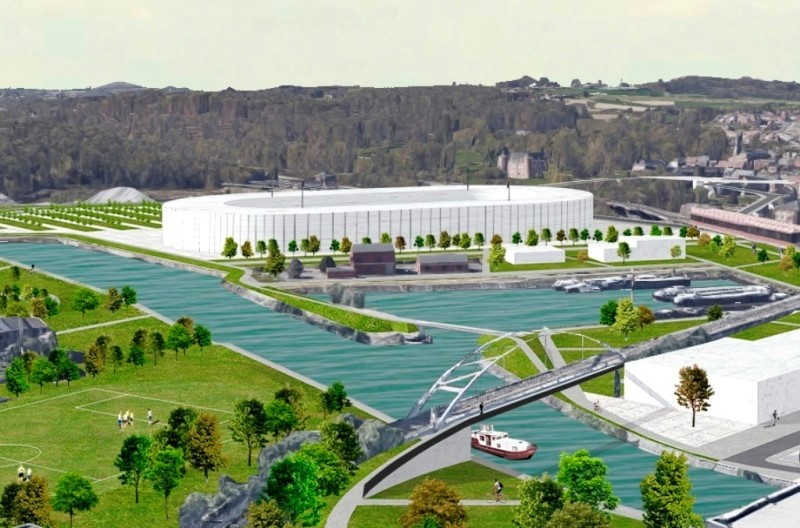
New Sporting stadium project
The latest project. Expected opening in 2024.
Notes
- The judicial affairs of Charleroi, on Wikipedia (in French).
-
This article comes from my old site www.foothisto.be but was never published.
It has been somewhat modified and updated recently (April 2020).
Related page
- Visit of Charleroi and its surroundings.
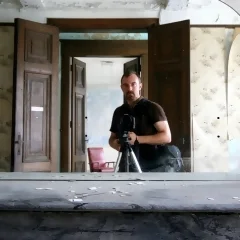
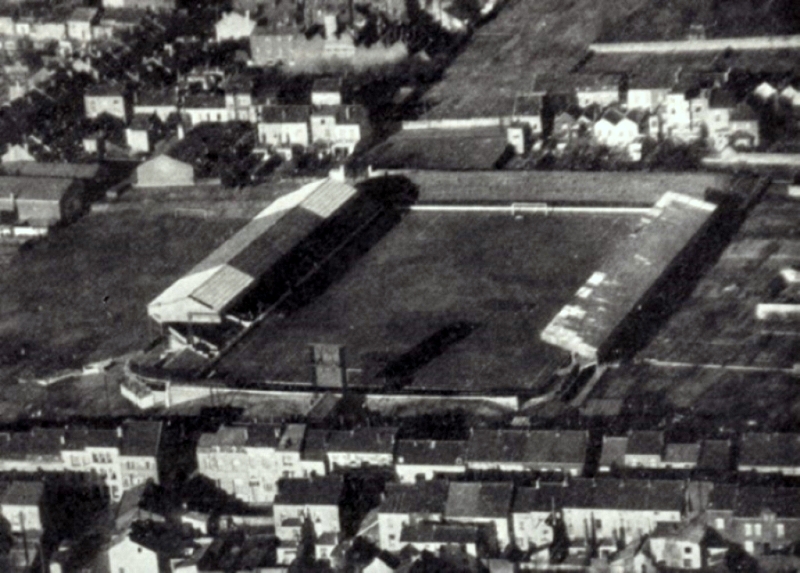
Soyez le premier & devenez quelqu’un de bien • Be the first & become a good person